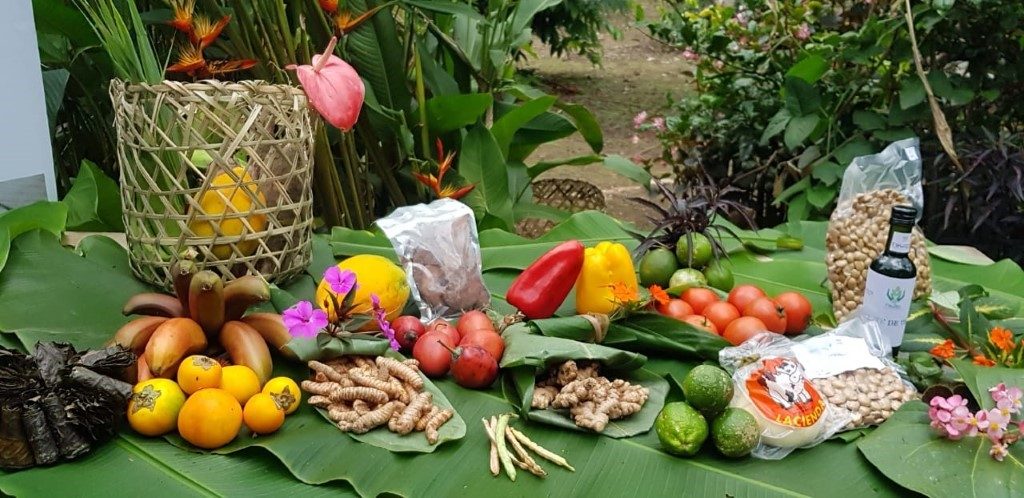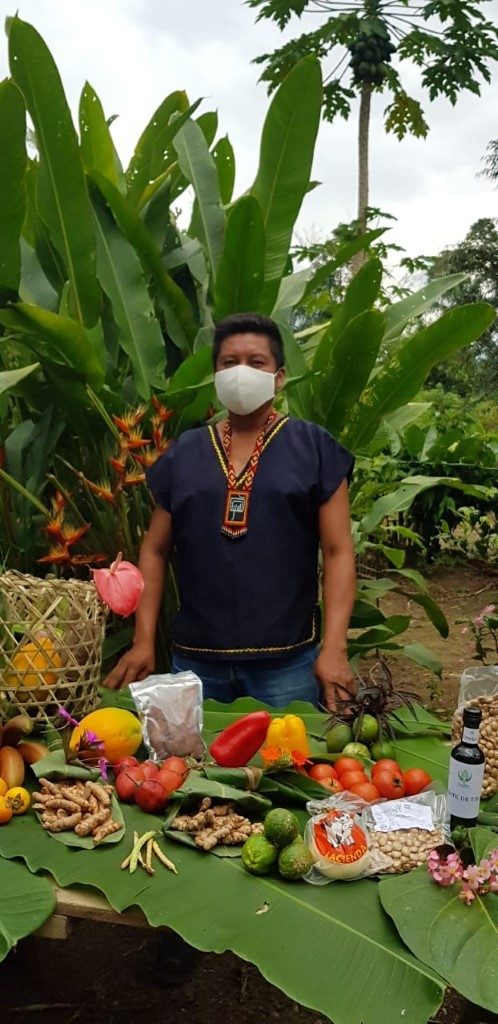The Inti Association received us with Amazonian foods and community representatives among the trees under a blazing sun. Guido Grefa and Teresa Mamallacta wore local dress and began the day with a tour of their headquarters in Napo. Dressed in blue and wearing a large necklace, Guido, the secretary of the Association, explained how Inti1 was established. “We formed the INTI group with the communities near the road to Archidona, San Vicente Para and part of the Kichwa Rukullakta People.” The efforts began in 2011, and thanks to their associative spirit, they won the support of non-governmental organizations and the National Government, mainly through the Ministry of Agriculture and Livestock (MAG) and the Provincial Council. A series of procedures and processes were required to finally obtain legal status in August 2012. Today, Inti has 146 members, men and women from the Amazon.
Inside the center, Teresa, the coordinator of the association, wore a very colorful blouse typical of the area. She began her story in Kichwa, explaining how they motivate farmers to plant in their fields and sell local products at fairs. “We plant bananas, yucca, greens, oritos and medicinal plants on our farms and fields. Our mothers plant and sell products from the area.” An important crop is sacha inchi or ticaso. It provides oil and guayusa for infusions in hot and cold drinks. These plants have reached international markets such as the United States and Europe.
The Inti Association offers training to its members and has projects underway to strengthen the sustainable production of its products. The intention is to keep their culture and ancestral knowledge alive through the Amazonian foods they produce, and share with other people the natural, healthy foods that are the diet of Amazonian communities. Teresa emphasized that with these products you can have good health; for example, during the pandemic they consumed many medicinal plants preventively. “We want to use what is in nature, we prefer organic production, we want our own products with no chemicals.”
After a tour of the association, Amazonian products were exhibited on a large table in the center of the courtyard of the Inti center. Guido and Teresa showed products that are marketed in ashangas (agro-ecological baskets) containing around 19 Amazonian products grown and marketed by Amazonian women.
The production of these baskets starts very early. At 04:00 in the morning, women leave their homes and gather in the gardens. Onions, lettuce, tomatoes, peppers, Amazonian oranges, medicinal plants, naranjilla, guayusa, ginger, yucca, etc., are grown with great care. This initiative began as a way to improve the marketing of Amazonian products. Ashangas now include processed foods such as cheese and chocolate, and other lesser known products such as oyster mushrooms and turmeric.
Ashangas are produced by rural women. Sisters, wives and daughters make it possible for Ecuadorian families to feed themselves. According to MAG figures, the Peasant Family Agriculture sector is strategic for rural sustainable development: it generates more than 70% of rural jobs and produces approximately 60% of the food consumed in the country, as well as other positive environmental, cultural and social conservation impacts.
Acquire your ashanga from the third week of October through the following website: https://colaboratoriociudadano.org/


Photos: Amazon Productive Transformation Agenda of the Ministry of Agriculture of Ecuador
Author: Lizeth Jurado, Development Communications Specialist of PROAmazonía
1 The Inti Association produces food in the field and the added value of Sacha inchi.
 Español
Español English
English
Comments are closed.